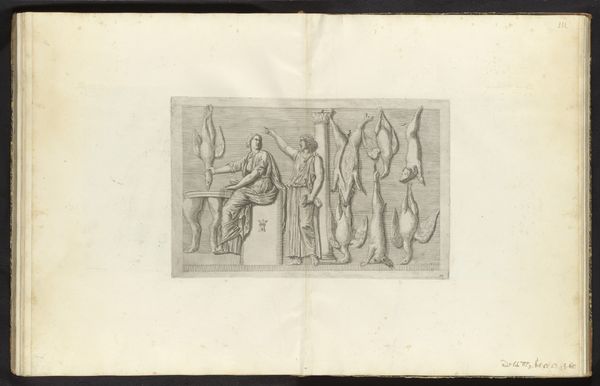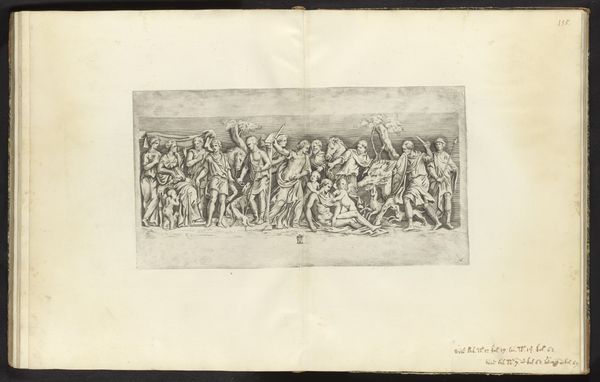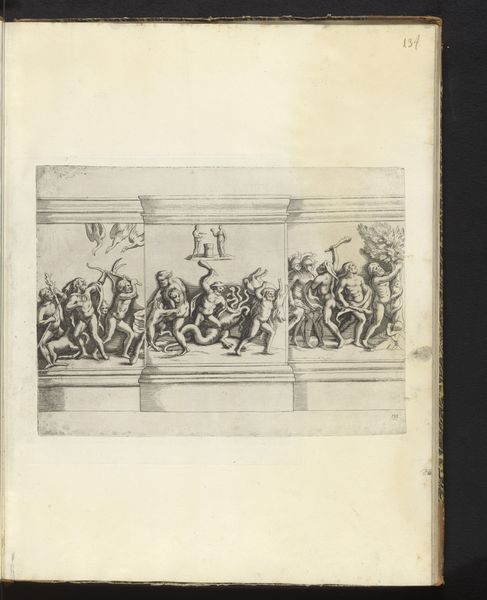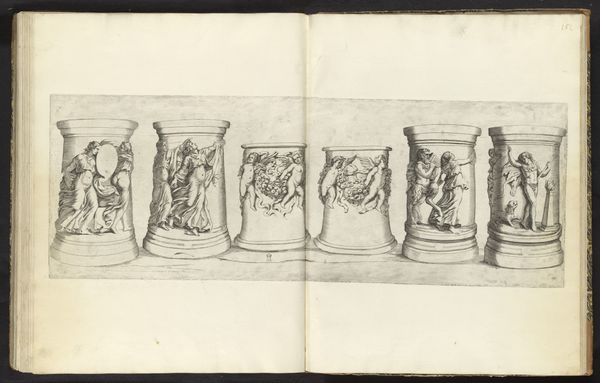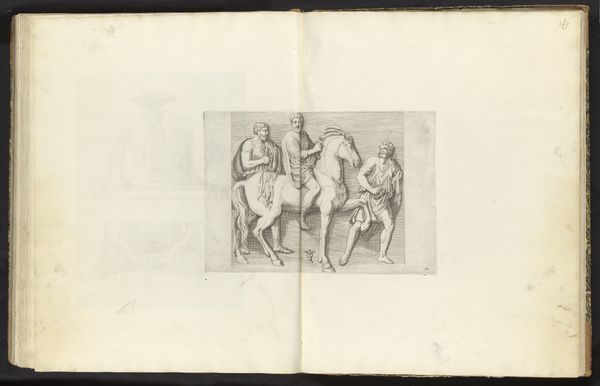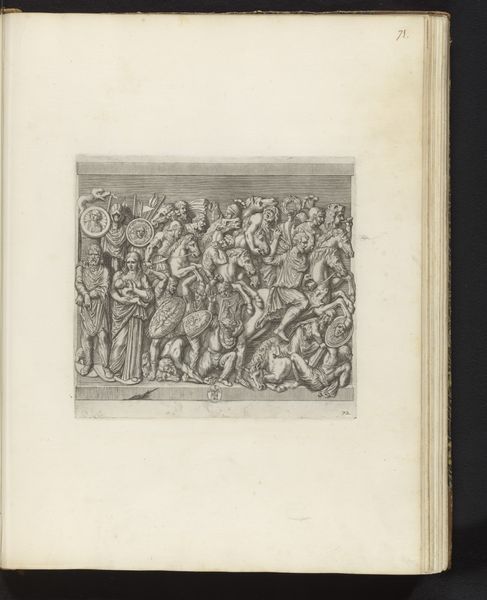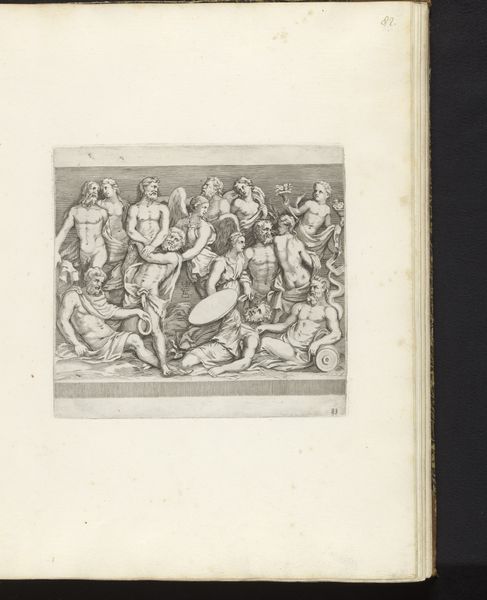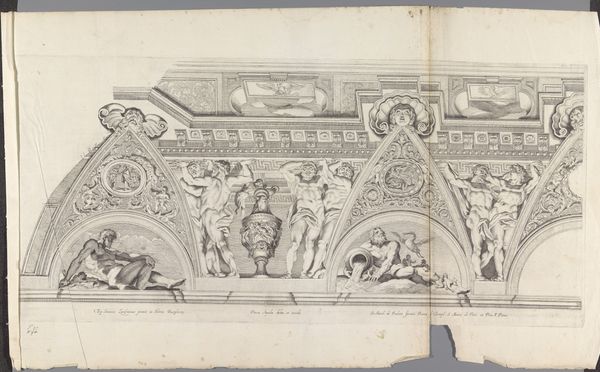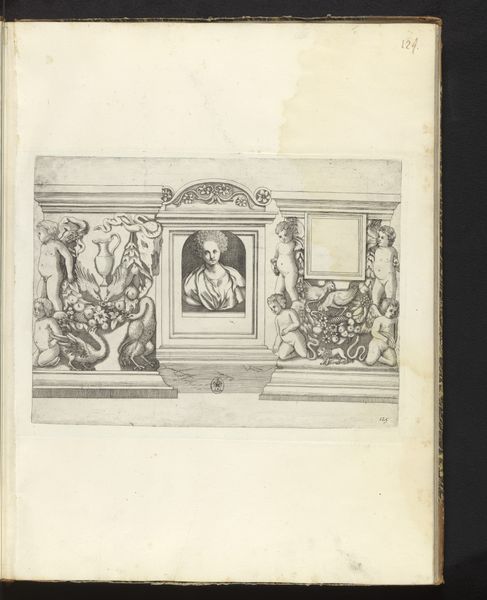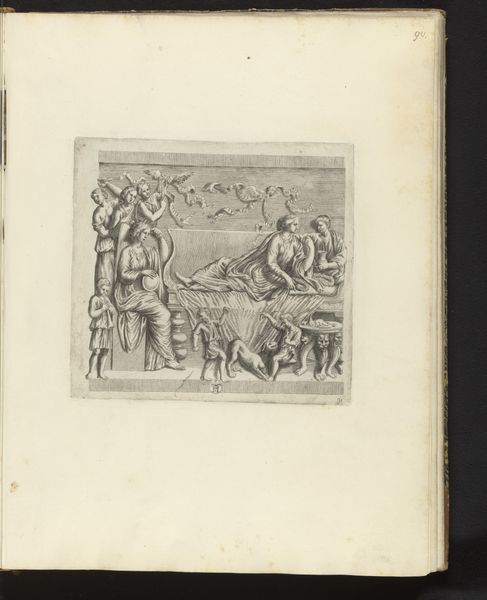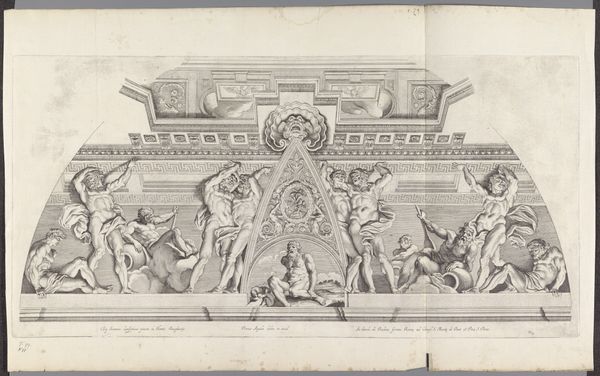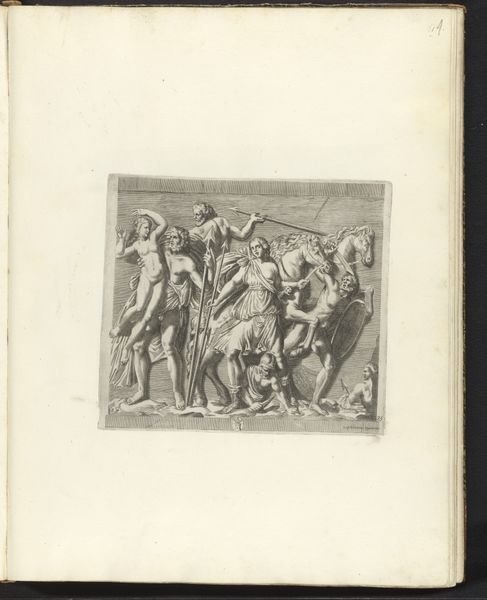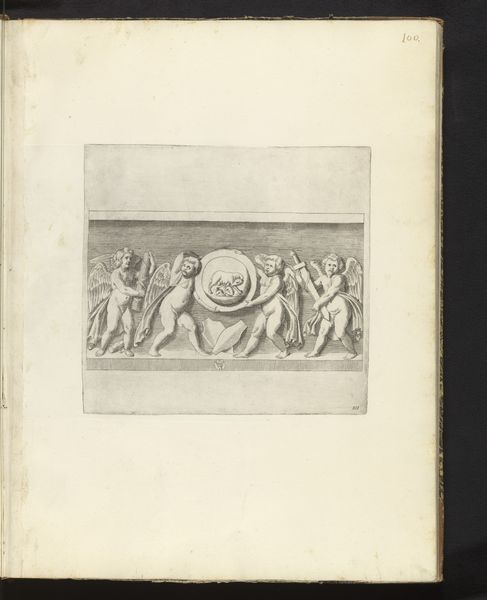
print, relief, engraving
#
baroque
#
ink paper printed
# print
#
relief
#
sketch book
#
figuration
#
form
#
pen work
#
sketchbook drawing
#
engraving
Dimensions: height 219 mm, width 460 mm
Copyright: Rijks Museum: Open Domain
Curator: Welcome. We're looking at a print titled "Bas-reliëf met putti," or "Bas-relief with putti" made between 1636 and 1647 by Pieter de Bailliu. It resides here in the Rijksmuseum collection. Editor: Immediately, I'm struck by its rather playful, almost frivolous character. It has the texture of aged parchment, with an exquisitely light touch to each line. The artist coaxes depth and form with the most subtle shifts in tone, wouldn’t you agree? Curator: Certainly. Look closely at the composition; observe the arrangement of the putti and their placement within the architectural setting. The linear quality creates depth and highlights the sculptural nature of the design itself, playing with relief. It echoes classical form, mediated through the Baroque interest in ornamentation and detail. Editor: It reminds me of academic exercises. What does the imagery communicate? Are these merely chubby children, or do they evoke a deeper symbolism, such as love, innocence, or the cycle of life as traditionally interpreted? This feels complicit, in some ways, with a worldview privileging leisure and the aestheticization of existence, when considering its time. Curator: I’d say that is too simplistic. Notice how Bailliu manipulates light and shadow to emphasize certain forms, drawing the eye to moments of tension or resolution within the composition. The very execution in print form transforms something classically conceived of as high art into something replicable and widely available for study. The linear design emphasizes clarity and precision. Editor: But who had access to it? I appreciate your pointing to formal concerns, of course. However, understanding the work also requires situating it within social hierarchies. Did it only function to naturalize systems of power? To instruct? It begs further inquiry into its complex cultural encoding as it circulates. Curator: Perhaps. The interplay between form and function generates multiple interpretations, from a purely aesthetic appreciation of line and form to deeper reflections on its content. In the end, this work's elegance invites scrutiny from various standpoints. Editor: Absolutely. Analyzing its legacy by bridging history and critical theory is key to understanding how art of the past still has impact today. Thank you.
Comments
No comments
Be the first to comment and join the conversation on the ultimate creative platform.
